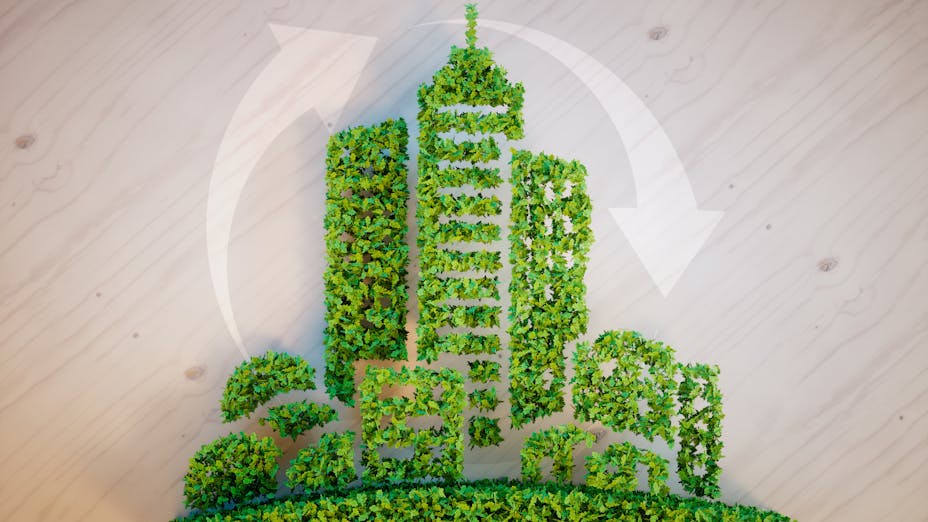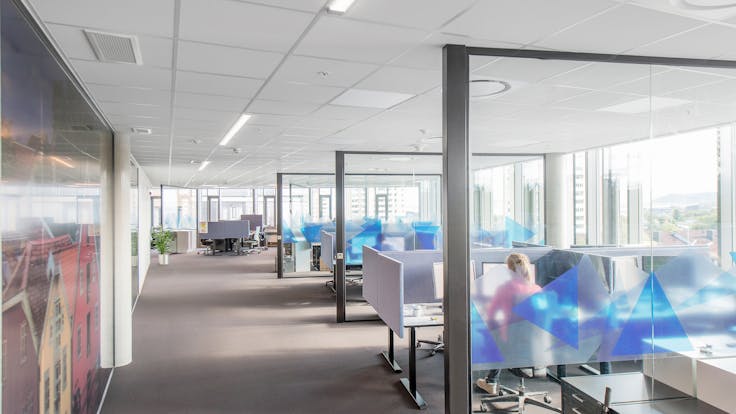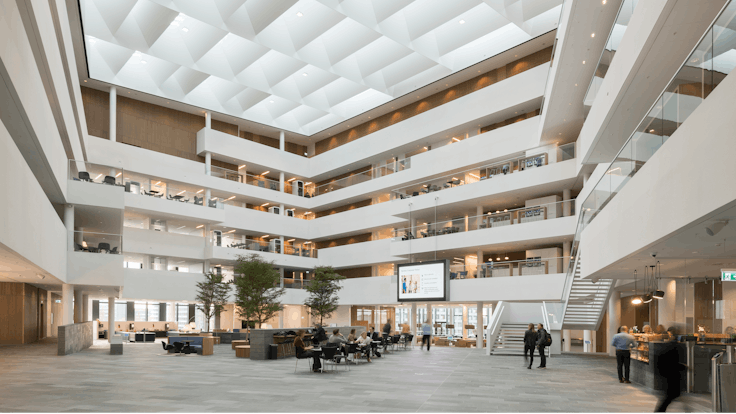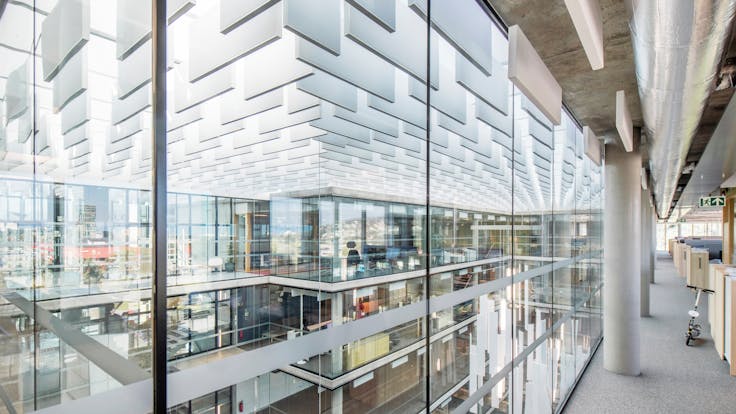Building a green building:
What are some important sustainable building rating schemes?
Navigating the different building rating schemes can be a lot to take in. LEED, BREEAM, DGNB and WELL are some of the most well-known sustainable building rating schemes
What is LEED?
LEED® (Leadership in Energy and Environmental Design) is a world-renowned green building rating system. LEED is recognized internationally and was developed by USGBC to provide organizations and individuals with a means of measuring their environmental efforts while providing them credit for implementing sustainable strategies that benefit both people and the planet.
Requirements for LEED Certification: The requirements are split into four categories - Sustainable Sites, Water Efficiency, Energy & Atmosphere, Materials & Resources
What does it mean to be LEED certified?
LEED Certified buildings have many great benefits that advance the economic, environmental and health-promoting performance of a building. Looking at costs, LEED-certified buildings reduce costs linked to energy, water and waste, and experience a significantly better overall performance that leads to a higher competitive advantage and reduced vacancy spaces.
LEED also focuses on healthy indoor air quality and the wellbeing of occupants, while at the same time, decreases carbon emissions and energy use, helping to create sustainable and green buildings.
Are you interested in getting your building LEED-certified? Find out how Rockfon products can help you earn credits toward your LEED certification.
Download our LEED scorecard or visit our LEED landing page.
What is BREEAM?
BREEAM is a building rating scheme that started in the UK but is now internationally recognised because of its high sustainability standards and its focus on building things for today which will last in the future.
BREEAM’s sustainable development philosophy is centred around three core pillars. It evaluates the social, economic and environmental impact of a building.
What does it mean to be BREEAM certified?
Getting a project BREEAM certified is great for new builds, renovations and community and infrastructure projects. A BREEAM certification can help reduce the operational costs of the building, with significant long-term savings in terms of water and energy, making the building more attractive to sell, rent or retain, while it also creates healthy and safe places to live, work and learn.
For example, research from the World Green Building Council has shown that improvement in indoor air quality can help increase productivity by as much as 8-11%*.
*World Green Building Council, 2021, “Health, Wellbeing and Productivity in Offices: The Next Chapter for Green Building”
Download our BREEAM scorecard or visit our BREEAM landing page to find out more about how our acoustic ceiling and wall panels can help get you BREEAM certified.
What is DGNB?
DGNB (Deutsche Gesellschaft für Nachhaltiges Bauen) is a German building rating scheme committed to promoting sustainability by looking at the environment, people’s wellbeing and cost-effectiveness. To make a difference, DGNB has created an internationally recognised certification methodology that can be applied in different countries and specific regional conditions.
What does it mean to be DGNB certified?
The DGNB Certification System offers a wide range of benefits to its users, building owners and investors, planners, architects and consultants. High quality of life and wellbeing is a central tenet in the DGNB System, as is the lifecycle of a building and its operational costs.
DGNB’s strong methodology has real benefits for investors. Having your building DGNB certified has shown to improve a property’s value, reduce building vacancies and help secure loans.
Download our DGNB scorecard or visit our DGNB website to find out more about how our acoustic ceiling and wall panels can help get you DGNB certified.
What is WELL?
The WELL Building Standard™ version 2 (WELL v2™) is a building scheme backed by scientific research, enabling you to create spaces that improve occupant health and wellbeing. This is done through specific design choices, operational protocols and policies that can give your building a bronze, silver, gold or platinum rating.
What does it mean to be WELL certified?
The WELL certification covers two main building types:
- Owner-occupied: buildings that are owned and mostly occupied by the project owner.
- WELL Core: Buildings that are mostly leased by the project owner, where at least 75% of the occupants would like to implement WELL features.
Buildings pursuing certification can earn points based on how well they satisfy the WELL policy, design and operational strategies. All projects must satisfy the preconditions to achieve the basic WELL certification, but they can also add further optimisations to attain higher certification levels. These are bronze, silver, gold and platinum.
Download our WELL Scorecard or visit our WELL landing page and see how our acoustic ceiling tiles, baffles, islands and wall applications satisfy WELL requirements.
Designing for sustainability rating scheme
Now that you have a global understanding of the main green sustainability schemes, the next step is to get an overview of the different steps you need to take in order to meet the criteria for architectural design and green building rating systems.
Seven fundamental guidelines for architects about sustainable design
- Consider the location and orientation of your building
- Save on energy consumption
- Improve water efficiency
- Use natural and recycled building materials
- Choose durable construction materials
- Ensure a great indoor climate and built environment
- Reduce the operational and maintenance footprint of the building
Healthy building materials
Sustainable building materials together with design are key to meeting the strict requirements found in green building rating schemes. To strike the right balance between building performance, quality, beautiful design and indoor wellbeing, it is vital to work with the right materials and products.
Achieving one single certification is already difficult enough, but when you want to achieve greener architecture ratings it can be even harder if you don’t pay enough attention to the final goal. You should make sure to follow the following steps when choosing your building materials.
First and foremost, make sure your materials are as durable as possible by choosing the most sustainable ones you can find. Secondly, take into consideration what aesthetic will work best for your architecture with sustainability in mind- don't forget beauty is important! Lastly choose natural products that can be recycled, reducing the number of waste materials sent to landfills, which is better for the environment.
How can we help?
By working with Rockfon, you are getting much more than acoustic solutions. You contribute to a more sustainable future. Because our products are made from long-lasting natural materials, like volcanic stones, they’re recyclable, they have a high recycled content, they support the closed-loop circular economy and are certified to leave a positive impact on people and the planet, as our latest Cradle to Cradle certification shows.
Green construction
When it comes to sustainability, there are a lot of ways you can make an impact, and one way is by building rating schemes. If you’re looking for more information on how Rockfon can help you earn points in different green building rating schemes, reach out today! We would love to answer any questions that you have.
Get inspired with some WELL, DGNB, LEED and BREEAM certified projects that Rockfon was a part of.







